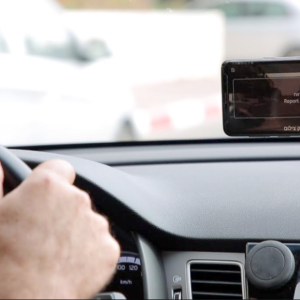 View Winners →
View Winners → 
Metro riders wait for a light rail train at Union Station. | Photo by star5112 CC BY-SA 2.0 DEED
Metro is touting a rise in ridership numbers Tuesday and Los Angeles Mayor Karen Bass says it shows how the public transportation service is safer and more accessible.
Metro had an 11.6% increase in ridership on its buses and trains in 2023 and recorded the highest numbers since the coronavirus pandemic, the transit agency announced Monday.
“Metro is making the system safer, more welcoming and accessible,” Bass, who is also the Metro Board Chair, said in a statement. “The ridership numbers reflect that.”
There was a total of 284,905,020 boardings on its buses and trains in 2023, an 11.6% increase over 2022 ridership numbers, according to Metro.
The transit agency cited its efforts to address safety, improve cleanliness, and speed up service for the increase in ridership. Additionally, Metro noted weekend and sporting events played a vital key for its 2023 ridership gains.
“We’ve been working hard over the last couple of years to put people first and make our system cleaner, safer and more reliable and easier to use than ever before,” Stephanie Wiggins, CEO of Metro, said in a statement. “Because of all our improvements, Angelenos are increasingly making Metro their mode of choice to get to their favorite destinations, especially on weekends.”
She added, “We look forward to building on the success of 2023 and making 2024 an even better year for Angelenos and our agency.”
In 2023, Metro introduced or enhanced its security measures through Metro Transit Security, Metro Ambassadors and its care teams.
Some key areas of focus for Metro’s law enforcement partners were reducing trespassing and drug use on the system, which resulted in a nearly 30% decrease of those issues, the transit agency said.
Metro also touted the success of its station experience program at Westlake/MacArthur Park, where Metro previously reported having some of the highest levels of crime.
As part of the program, Metro made lighting upgrades, adjusted entrances, increased ventilation, reinforced fare gates, as well as introduced a mobile health clinic, deployed homeless outreach teams and crisis interventionists.
Metro said it has taken significant steps to ensure the cleanliness of its system, by replacing cloth seats with vinyl seating, hiring more custodians and cleaning staff, and improving end-of-line and station cleaning throughout the day and night.
Last year, Metro improved the reliability and frequency of its service, adding late-night hours, opening bus-only lanes, ramping up transit options for special events and hiring more than 1,000 bus and rail operators, according to the agency.
The opening of the Regional Connector in June 2023, which reconfigured the A and E Lines, marked seven months of operation by year’s end. As a result, the connector led to a 33.4% jump in ridership in December 2023 over December 2022, when the line operated as three lines, according to Metro.
The agency added more frequent service to the B (Red) and D (Purple) lines, with service improving to 12 minutes from 6 a.m. to 9 p.m., and 8:15 a.m. to 7 p.m. on the weekends, Metro said.
In the shared section of the B and D tracks, between Wilshire/Vermont and Union Station, trains are now running every six minutes.
Light rail lines saw improved frequency on the A (Blue), C (Green), E (Gold) and K (Expo) lines and additional late-night trains on its A and E lines, the agency said. For the A and E lines, peak hour trains (5-9 a.m. and 3- 7 p.m.) improved frequency to every eight minutes during weekdays and every 10 minutes during midday on weekdays and on weekends from 9 a.m. to 7 p.m., according to Metro. Additional trains added on these lines extended service by an extra 40 minutes each night, the agency said.
The C and K lines also saw improved service in December. Trains began operating every 10 minutes during the weekdays and weekend, according to Metro.
Metro said it expects K line frequency to improve to that level in May 2024 once the work and testing is complete for connecting the C and K lines and the forthcoming LAX/Metro Transit Center Station, which is set to open in late 2024.








































































































